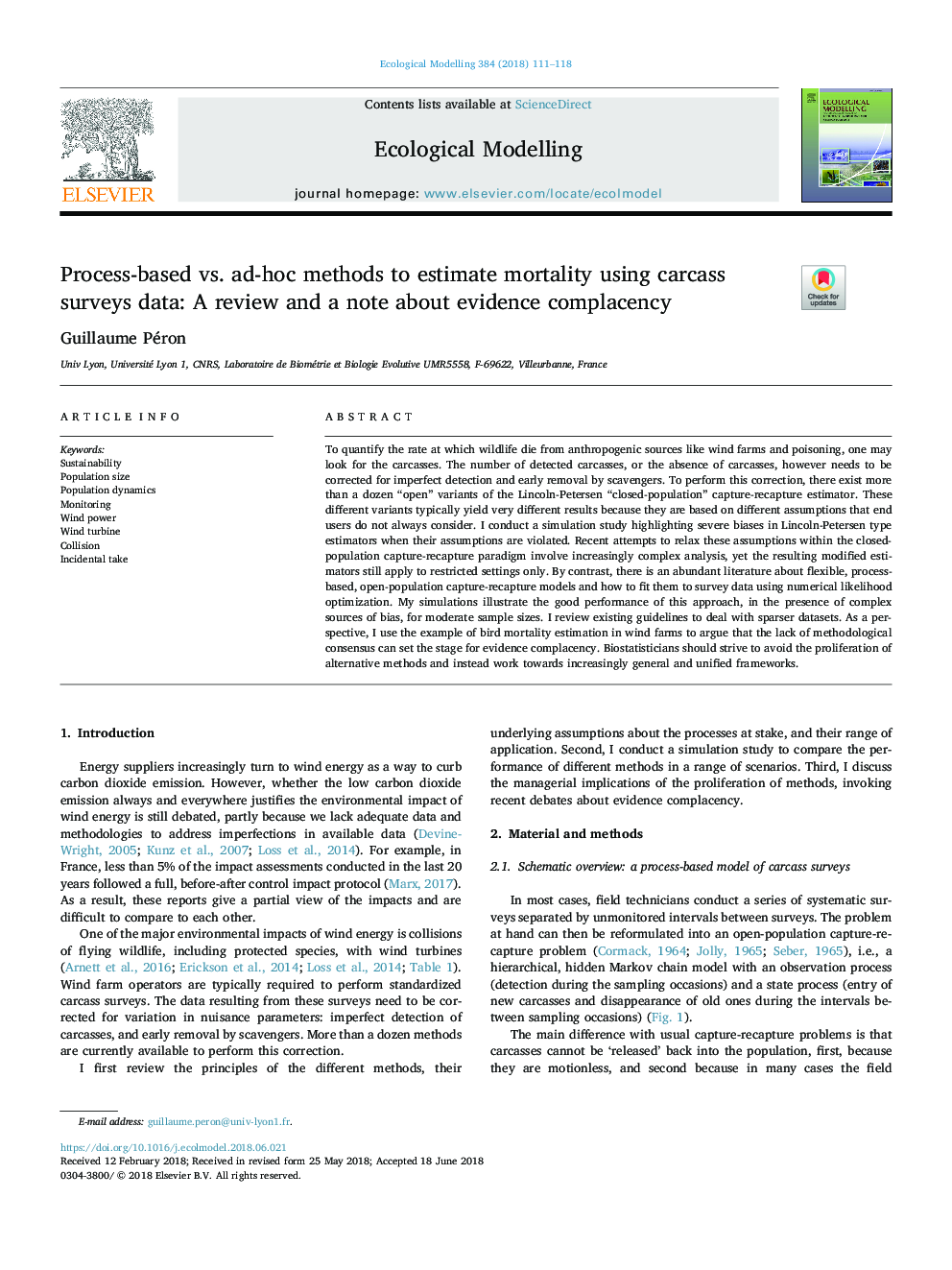| Article ID | Journal | Published Year | Pages | File Type |
|---|---|---|---|---|
| 8845982 | Ecological Modelling | 2018 | 8 Pages |
Abstract
To quantify the rate at which wildlife die from anthropogenic sources like wind farms and poisoning, one may look for the carcasses. The number of detected carcasses, or the absence of carcasses, however needs to be corrected for imperfect detection and early removal by scavengers. To perform this correction, there exist more than a dozen “open” variants of the Lincoln-Petersen “closed-population” capture-recapture estimator. These different variants typically yield very different results because they are based on different assumptions that end users do not always consider. I conduct a simulation study highlighting severe biases in Lincoln-Petersen type estimators when their assumptions are violated. Recent attempts to relax these assumptions within the closed-population capture-recapture paradigm involve increasingly complex analysis, yet the resulting modified estimators still apply to restricted settings only. By contrast, there is an abundant literature about flexible, process-based, open-population capture-recapture models and how to fit them to survey data using numerical likelihood optimization. My simulations illustrate the good performance of this approach, in the presence of complex sources of bias, for moderate sample sizes. I review existing guidelines to deal with sparser datasets. As a perspective, I use the example of bird mortality estimation in wind farms to argue that the lack of methodological consensus can set the stage for evidence complacency. Biostatisticians should strive to avoid the proliferation of alternative methods and instead work towards increasingly general and unified frameworks.
Related Topics
Life Sciences
Agricultural and Biological Sciences
Ecology, Evolution, Behavior and Systematics
Authors
Guillaume Péron,
